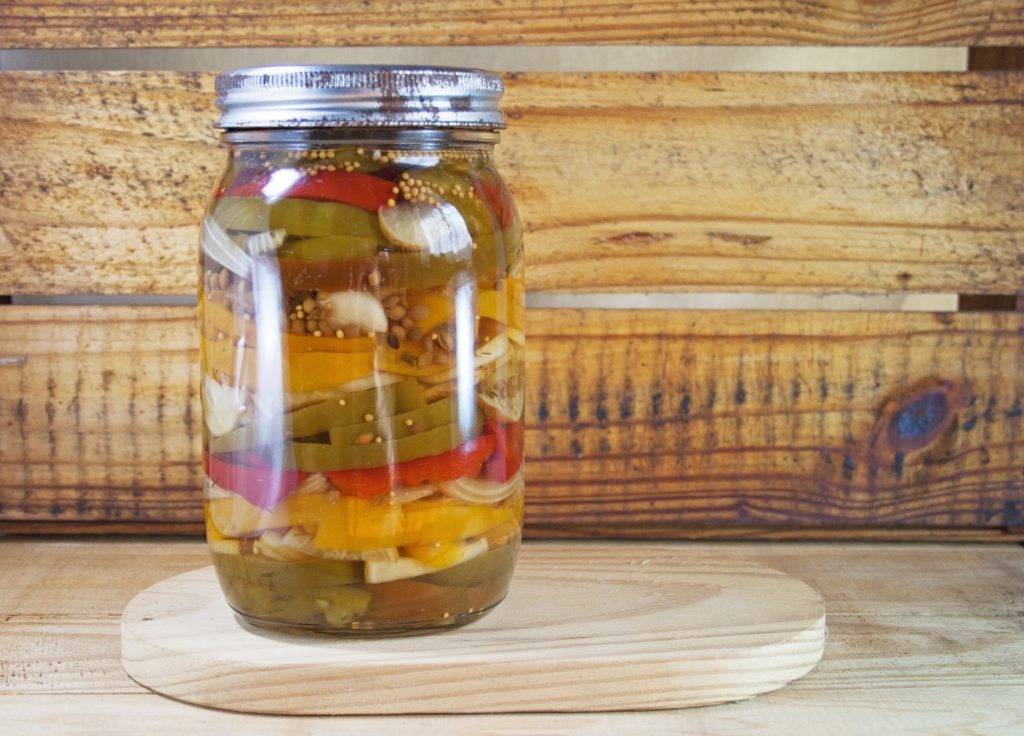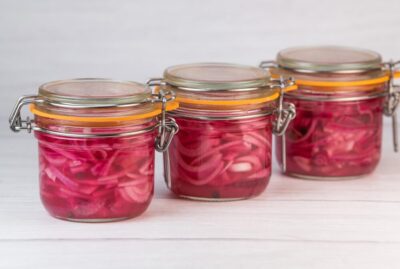If you’ve strolled through the stands at the Markets at Shrewsbury one thing becomes abundantly clear: our vendors love pickling. You’ll find jars of pickles, pickled vegetables, or sauerkraut. Have you ever been tempted to try the pickling process yourself, as a way to enjoy or preserve a bounty of summer produce? Here’s a quick guide on what can be pickled.

Try These Two Pickling Methods
There are two methods to pickling vegetables – one that allows you to quickly pickle and serve your vegetables and the other that allows you to preserve your produce for a much longer shelf life.
Quick Pickle
This is also commonly called a “refrigerator” pickle. Using this method, pickling acts much like a marinade, adding a full-bodied flavor to your veggies. In the refrigerator, quick pickled vegetables can last up to a month.
Mixing a quick pickle solution includes equal parts water and vinegar, as well as salt and sugar. Here is an easy quick pickle recipe:
- 1 cup vinegar
- 1 cup water
- 1/4 cup sugar (Granulated sugar is the best for pickling)
- 1 tablespoon salt
- Bring water and vinegar to a boil and dissolve the salt and sugar
- Place your vegetables (washed, dried, and sliced) into a clean jar. Pack tightly without smashing your vegetables.
- Add the boiled solution to the jars, leaving about 1/2 inch at the top, and seal the jars.
- Store in the fridge for 24 hours before eating
Canned Pickle
The process of canned pickling, also called fermented pickling, can actually extend the shelf life of produce. Canned pickling includes a brining step, which encourages fermentation, a process that promotes the growth of good bacteria and eliminates the bad bacteria that causes spoilage.
You can learn more about the traditional canning process in our Preserve Your Summer Fruits & Vegetables blog.
Choosing Your Pickling Ingredients
In the pickling process, not all ingredients are created equal. Follow these tips to ensure you’re using the right ingredients for the best results.
Vinegar
- White vinegar and white wine vinegar are most commonly used in the pickling process.
- Apple cider vinegar can offer a more mild flavor, but it can also change the color of your vegetables.
- Avoid balsamic or malt vinegar when pickling as they can be too overpowering.
Salt
- Pickling/canning salts or kosher salts are most commonly used in pickling.
- Table salt, which contains iodine and anti-caking agents, can turn your produce dark and your solution cloudy, but will not affect the taste.
Sugar
- You should use no more than 1/4 cup of sugar in your pickling sugar solution.
- White granulated sugar is most commonly used.
- Brown sugar adds good flavor but can turn light-colored fruits and vegetables darker.
- Syrup or honey can poorly affect the taste of your solution.
- Sugar substitutes are affected by heat and storage and can affect the desired taste.
For diverse flavors, you can also experiment by adding the following herbs or spices to your pickling solution:
- Black peppercorns
- Mustard seeds
- Chili flakes
- Dill
- Garlic
- Ginger
The Best Pickling Vegetables
Pretty much any vegetable can be pickled, but here are some of the most popular picking vegetables:
- Cucumbers
- Carrots
- Zucchini
- Cauliflower
- Cabbage
- Peppers
- Asparagus
- Green beans
The pickling process is not just for vegetables. You can also create pickled fruits. Believe it or not, the vinegar and salt solution can actually bring out desired the sweetness or tartness of these summer fruits:
- Cherries
- Peaches
- Watermelon
- Plums
- Blackberries




